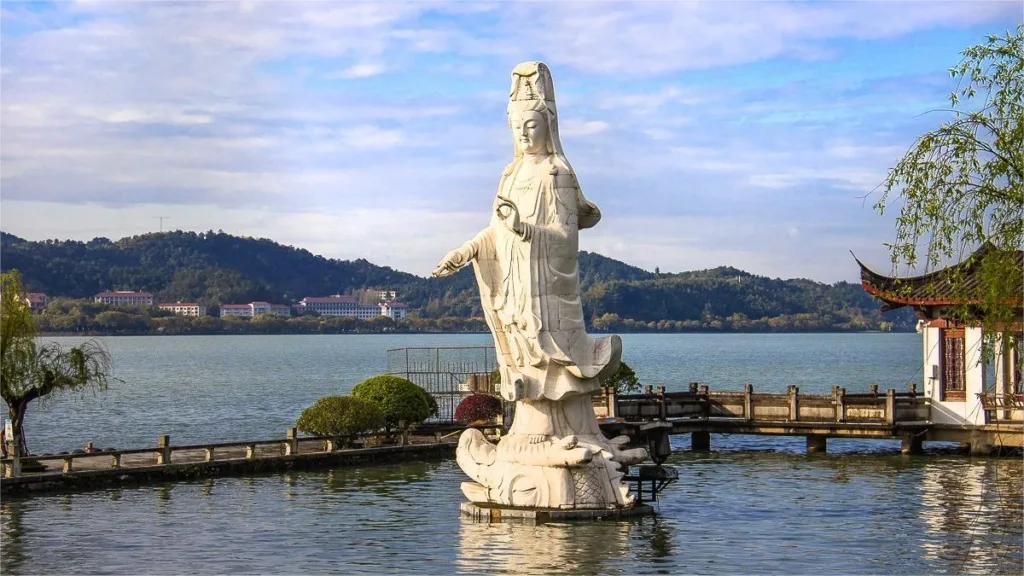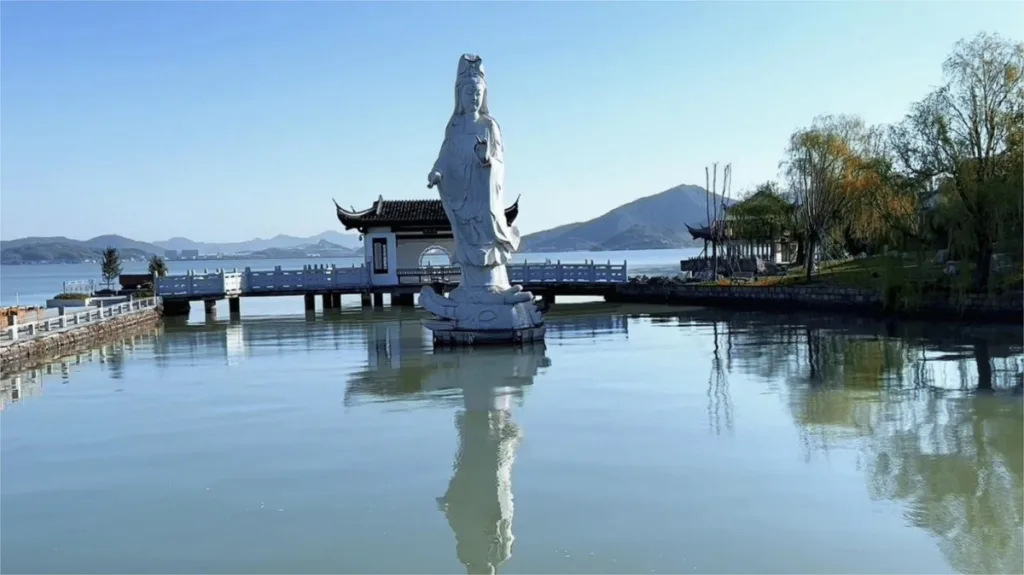Tiantong Temple (天童寺) covers an area of over 76,400 square meters and dates back to the first year of Yongkang during the Western Jin Dynasty (300 AD). It is one of the five great Chan (Zen) temples of Buddhism and is renowned as the “Buddhist Kingdom of the Southeast.” The temple complex comprises over 30 structures, totaling 999 rooms, including halls, pavilions, towers, and cottages. Its existing scale largely maintains the layout of the Ming Dynasty, exhibiting a meticulous arrangement and exquisite architectural structure.
Legend has it that during the first year of Yongkang in the Western Jin Dynasty, a monk named Yixing traveled to the southern mountains of Yangzhou (now Ningbo’s Yinzhou District) and settled in the eastern valley due to its beautiful scenery. In the nearby valley, there were no signs of human habitation, but a young boy appeared daily to bring firewood, water, and food to the monk. Eventually, a hermitage was built, and the young boy revealed himself to be the Tai Bai Jin Xing (Venus), sent by the Jade Emperor to assist the monk due to his dedication to spiritual practice. Upon the completion of the temple, the young boy bid farewell, disappearing without a trace. As a result, the mountain was named Taibai and the temple was named Tiantong, meaning “Heavenly Boy.”
Table of Contents
- Basic Information
- Location and Transportation
- Highlights of Tiantong Temple
- Vlog about Tiantong Temple
- Attractions near Tiantong Temple
Basic Information
| Estimated Length of Tour | 3 hours |
| Ticket Price | Free |
| Opening Hours | 6.00 – 17.00; Last admission: 16.30 |
| Telephone Number | 0086-0574-88480525 0086-0574-88480624 |
Location and Transportation
Tiantong Temple is situated in Tiangong Village, Dongwu Town, Yinzhou District, Ningbo, Zhejiang Province, China. It lies at the foot of Mount Taibai, approximately 25 kilometers east of downtown Ningbo. To get there, you can take bus 171 or V55 and get off at Tiantong Temple Stop (天童寺站).
Highlights of Tiantong Temple
Mahavira Hall
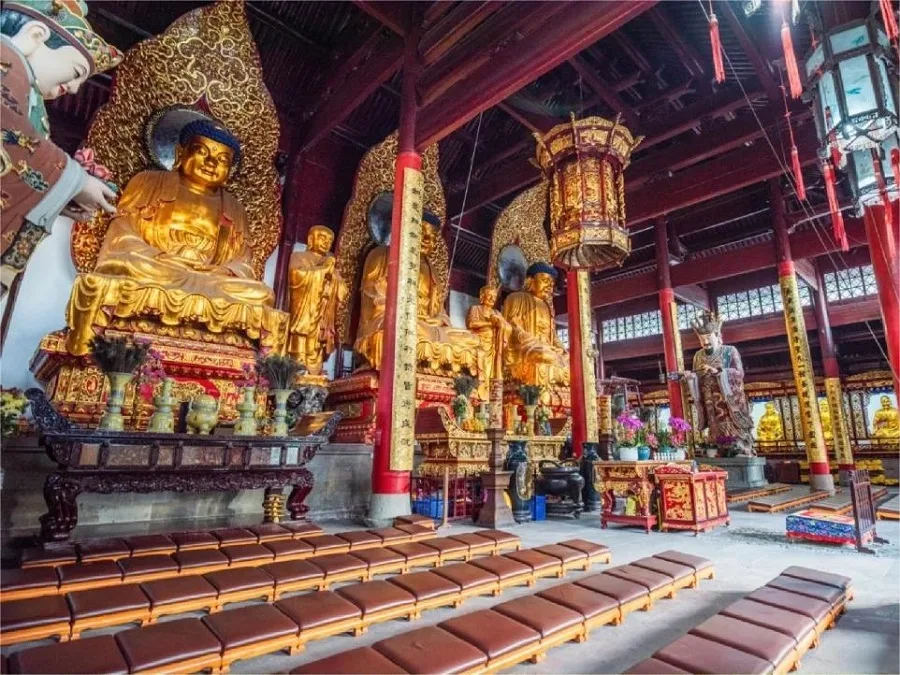
The highlights of Tiantong Temple include the Mahavira Hall and the statue ensembles within it. The hall houses the central trinity of Buddhas: Sakyamuni Buddha, the Medicine Buddha (Bhaisajyaguru), and Amitabha Buddha, representing the three spatial worlds of the East, Middle, and West. The Medicine Buddha, positioned to the right, is revered for his role in dispelling calamities and extending longevity. To the left stands Amitabha Buddha, the principal figure of the Pure Land of the Western Paradise. Flanking the Main Hall are the Eighteen Arhats, esteemed disciples of Buddha known for their enlightenment.
Behind the Three Buddhas stands the statue ensemble of Guanyin Bodhisattva on a sea island. This ensemble portrays 150 Buddha figures of various sizes and expressions, with a central focus on the youthful acolyte offering reverence to Guanyin. According to Buddhist scriptures, this acolyte, named Sudhana or “Good Wealth,” was one of the five hundred youths in the city of Sukhavati who were bestowed with treasures at birth. He sought enlightenment under the guidance of Bodhisattva Manjushri, visited fifty-three teachers, and ultimately attained enlightenment under Bodhisattva Samantabhadra before being taken under Guanyin’s guidance.
In the center of this ensemble is Guanyin Bodhisattva holding a vessel of pure water. Guanyin, known for compassion and benevolence, is believed to be responsive to urgent pleas for help and is revered by countless devotees for her willingness to alleviate suffering and bring joy to others.
Tianwang Hall
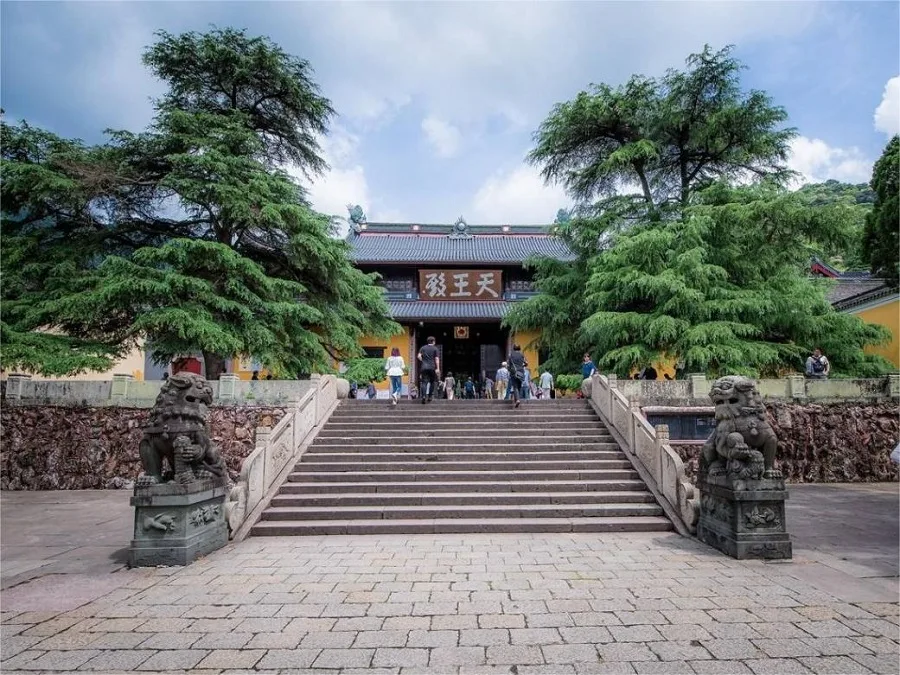
Tianwang Hall (Hall of Heavenly Kings) in Tiantong Temple serves as a place of worship for various deities and embodies protective symbolism in Buddhist tradition.
At the entrance of the Tianwang Hall is the statue of Maitreya Bodhisattva, known for granting blessings of family harmony and safety in travels. Conversely, on the opposite side, the hall houses the statue of Virudhaka Bodhisattva, offering prayers for household safety and protection in all endeavors. Virudhaka Bodhisattva, depicted with his back to the Maitreya Buddha and holding a vajra (thunderbolt), faces towards the Mahavira Hall where the central Buddha trinity is enshrined. This positioning symbolizes the protection of Buddhist teachings and the dispelling of malevolent forces, as per Buddhist traditions.
Flanking the Tianwang Hall are the Four Heavenly Kings. Each heavenly king holds a distinct attribute symbolizing their protective roles. Dhritarashtra, holding a green sword, guards the southern direction, promoting the growth of merit and safeguarding Buddhist teachings. Virudhaka, depicted playing a pipa (Chinese lute), protects the east, seeking to convert sentient beings to Buddhism through music. Vaishravana, guardian of the north, holds a treasure umbrella to subdue malevolent forces and protect the wealth of sentient beings. Finally, Virupaksha, protector of the west, is depicted entwined with dragons and serpents, possessing the “Pure Heavenly Eye” to observe the world and maintain its purity.
Shaobai Ridge
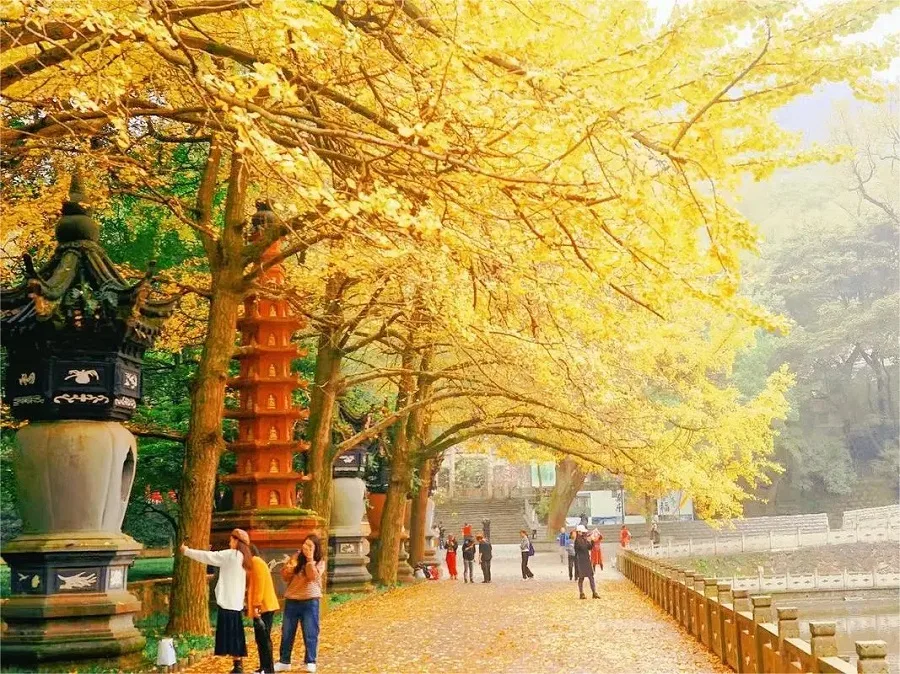
One of the highlights of Tiantong Temple is Shaobao Ridge, a must-visit site on the way to the temple. This place is home to the Wufu Zhenmang Pagoda, commonly known as Shaobai Pagoda. Legend has it that during the Tang Dynasty, a giant python terrorized travelers, devouring them along the way. Master Xinjing, using a stone steamed bun as bait, successfully killed the python and sealed it beneath the pagoda, which is why it’s also known as the “Iron Snake Gate” in folklore.


